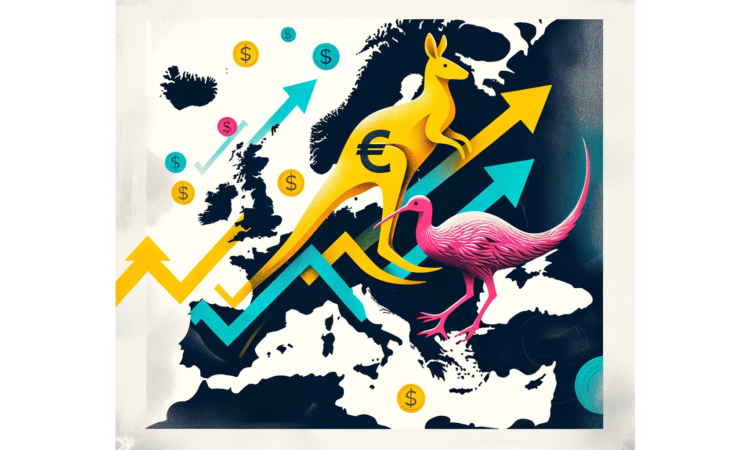
What’s going on here?
The Australian dollar hit a five-month high against the euro at 0.6182, climbing 1.3% for the week, while the New Zealand dollar reached a six-month high at 0.5749 per euro.
What does this mean?
European markets are jittery due to political turmoil and rising bond yields in places like France and Italy, hitting the euro. Meanwhile, the Australian and New Zealand dollars are not just beating the euro, but also the yen. Despite a slight dip against the US dollar, both currencies have seen weekly gains, showing overall strength. Upcoming decisions by the Bank of Japan to reduce bond buying and softer US producer price data are influencing global bond yields, including Australian 10-year yields, which dropped to a two-month low of 4.138%. In the US, mild inflation data has sparked chatter about a potential Federal Reserve rate cut in September, leading markets to adjust their forecasts for Australia and New Zealand as well.
Why should I care?
For markets: Navigating the waters of uncertainty.
The market now sees a higher chance of the Reserve Bank of Australia (RBA) cutting rates by December, with the probability rising from 30% last week to 63%. Talks about loosening labor markets might push this easing into November, though persistent inflation could delay it. In New Zealand, the Reserve Bank of New Zealand (RBNZ) has a 50-50 chance of cutting rates in October, with a quarter-point cut to 5.25% expected by November. Falling food prices and softer inflation in discretionary spending areas suggest monetary policies are working, which could soon bring inflation rates within the RBNZ’s target band.
The bigger picture: Global economic shifts on the horizon.
Political and economic instability in Europe, seen through rising bond yields and falling stock markets, creates uncertainty making safer currencies like the AUD and NZD more attractive. This situation underscores a broader trend where global policy decisions, such as the BoJ’s delayed tapering plans and potential Fed rate cuts, are intricately linked. As inflation rates ease and economic data remains volatile, both local and international investors must stay alert, adjusting their strategies to navigate these tumultuous financial waters.




